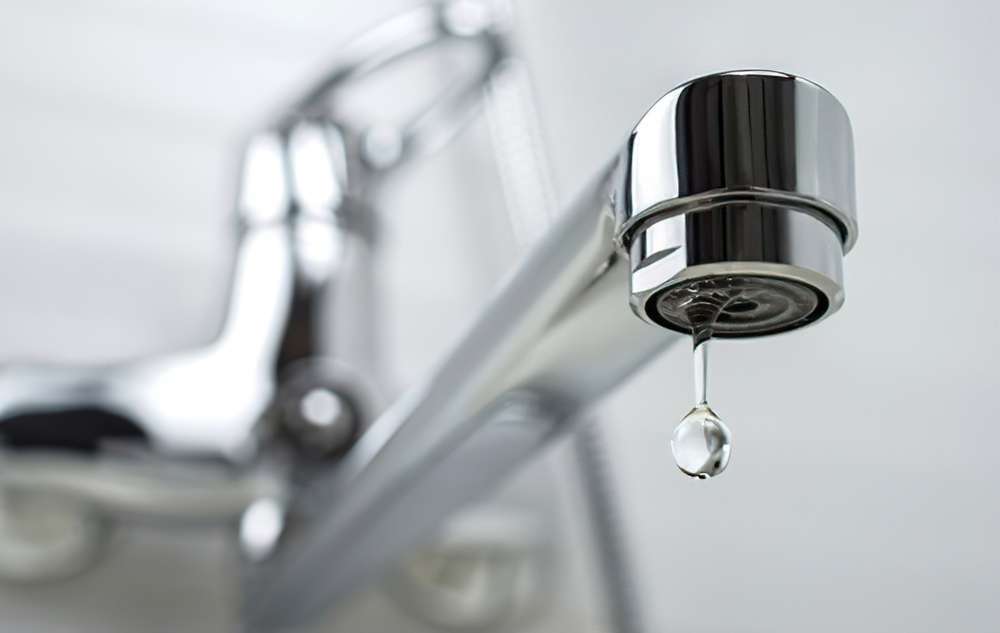What causes a faucet to drip is a question many homeowners ask when faced with this annoying problem.
A dripping faucet can not only disrupt your peace but also lead to higher water bills and potential plumbing issues if ignored.
In this guide, we’ll take a closer look at four common causes of faucet drips, helping you identify the issue and find effective solutions to keep your plumbing running smoothly.
Loose Or Worn-Out O-Ring
When it comes to dripping faucets, one of the first things you can investigate is the O-ring.
The O-ring is found inside the faucet itself. It is a small rubber disk which attaches to the valve stem screw. Its main purpose is for holding the faucet’s handle in position.
It is common for leaks to occur at this junction. With regular faucet use, an O-ring can become either worn-out or loose.
A major sign that your O-ring is malfunctioning is that you will see leakage from below the faucet handle.
The solution for this is rather straightforward – simply replace the O-ring.
How To Replace An O-ring
To replace your faucet’s O-rings, you will need: a crescent or strap wrench, needle nose pliers or flathead screwdriver, small cloth rag, and silicone grease.
First you will need to shut off the water going to your faucet. You can find the shut-off valves beneath the sink.
Loose the coupling nut at the base of the faucet spout with the crescent wrench. Use a rag when using the crescent wrench to avoid scratching the finish.
You can also use a strap wrench to turn the nut counterclockwise. Do note – if you have a single lever faucet, you must disassemble the faucet handle first before hand.
Once the coupling nut is off, you can remove the spout. To do so, twist to loosen it, then pull up from the faucet base to remove it.
After you have taken the spout off, the O-rings should now be visible. There will likely be 1, 2 or more. Remove the O-rings using either needle nose pliers or flathead screwdrivers.
Generously apply silicone grease to the spout base after you have taken the O-rings off. After applying the grease, slip the new O-rings on. Re-apply silicone grease again after you are done mounting the new O-rings.
Reassemble faucet components in the reverse order to which you removed them. Turn back the water supply once you are done.
Valve Seat Corrosion
Regular faucet use can not only wear out your faucet’s O-rings, but the valve seat as well. Identifying issues with your faucet’s valve seat is relatively easy.
If water is leaking around your faucet’s spout area, then chances are, it could be an issue with the valve seat.
Through regular use, water sediments begin to slowly build up. Eventually, this sediment build up can corrode the valve seat.
Constant corrosion will result in the valve seat being unable to form a tight seal. The lack of a tight seal between the valve seat and washer is what causes leaks to occur.
Just what exactly is a valve seat? The valve seat itself can be found at the base of the faucet knobs. On top of the valve seat, is a washer.
When you turn the faucet knobs on or off, the washer will either open or close. This is how you control your faucet’s water flow.
The valve seat is the connection of the compression mechanism of the valve and cartridge.
Replacing a valve seat yourself can be difficult. The task will require a set of specialized tools. For instance, you would need a seat wrench and valve seat grinder to name a few.
Locating the valve seat itself can be a huge challenge for homeowners. Not only that, you would also need to find a valve seat that exactly matches your old one.
You will need to use some of the aforementioned tools to reshape the old valve seat to stave off the leak.
Because of this, it’s often better to get the help of a professional to replace and clean your faucet valve seats.
Worn Washer
A worn washer is another common cause for leaky, dripping faucets. Like the valve seat, regular use will cause the washer to wear out.
Every time you turn your faucet’s knob, the washer rubs against the valve seat. The constant, repeating motion causes friction. This will eventually lead to the washer wearing out.
With a worn out washer, you will notice leakage or dripping coming from the spout. Leaks can also occur if you have the wrong washer size or if it is loose.
Fortunately, unlike the valve seat, you can easily replace a faucet washer. All you need to do is first turn off your water supply. Then disassemble your faucet, and install a new washer.
Washers can come in a variety of shapes and sizes. If you are unsure about which one to buy, you can take the valve stem with you to the hardware store. Buy a washer that matches it.
High Water Pressure
Excessively high water pressure can also be the culprit for a dripping faucet. There are a few telltale signs for this.
For instance, your faucet may periodically leak at a specific time during the day. Or, if you move the faucet handle in a certain position, a leak occurs.
If you experience this, high water pressure may be the cause.
High water pressure is one issue you do not want to ignore. If left alone, for long enough, it has the potential to damage your home’s plumbing system.
High water pressure can cause various malfunctions within your plumbing. A leaky faucet can be one such malfunction.
Plumbing fixtures and appliances are not made to withstand high pressures. Anything higher than the acceptable amount would damage them.
Pipes may begin to crack. Fittings and junctions will start to leak. Appliances, such as your dishwasher and washing machine will be worn down faster.
It is best to have a professional check out your plumbing if you suspect higher water pressure. It is often hard to pinpoint the exact cause.
There are numerous causes for high water pressure. Therefore, it is often best to have an expert handle this. Fixing this issue will be difficult without the expertise.
Faucet Fixture Repair With True Service Plumbing
Faucet drip keeping you up at night? Give us a call.
Our licensed plumbers will assess your home’s plumbing system and determine the root cause of your issue, and perform the services necessary to get your faucet right again.
From faucet fixture installation and replacement, faucet repair, or a total kitchen renovation, True Service Plumbing has your back when it comes to all things plumbing.


